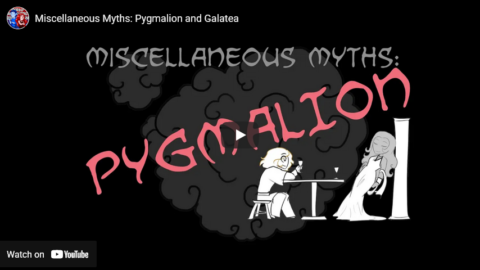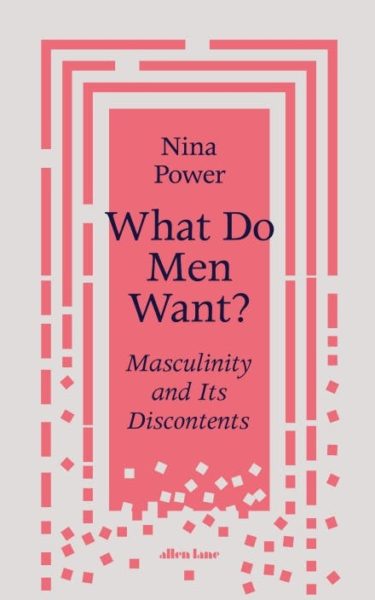There was, however, something perversely enticing about a drink that seemed to come from a post-apocalyptic wasteland in which color did not exist. There was an ingrained assumption that Zima must be expressly targeted at somebody, but nobody knew who that was … Zima was ridiculous … but did that actually mean it was brilliant? The only viable conclusion was “sort of”.
It’s true at first blush, but so douchey that you want it to be wrong just to spite whoever wrote it. I’ve never wanted a Zima more in my life than I did after reading that passage. But at second glance, it’s laughably false. Ask anyone who was in college in the 1990s; they’ll tell you exactly who Zima was “expressly targeted at”: Frat bros who were expecting female company. Because it was clear — no, really, it was beer(-ish) that looked like club soda — it somehow seemed like “diet beer”. Which meant your female party guests were almost guaranteed to have three or four more than they should.
In other words: Zima was the midrange panty dropper. Not as classy as white zinfandel, not as trashy as Boone’s Farm, there was no other possible reason to have it in your dorm fridge, but it somehow had plausible deniability when you offered it to her as a light refreshment. If Klosterman ever had sex at any time between January 1, 1990 and December 31, 1999, he knows this. There’s no way he doesn’t.
Severian, “A Meta-Review”, Founding Questions, 2022-02-24.
June 12, 2022
QotD: Zima
June 10, 2022
The common male delusion that they “age like fine wine”, unlike women who “hit the wall”
Ed West considers the brutal truth that while beauty may indeed be fleeting, ugliness is life-long:

George Clooney at the White House, 12 September, 2016.
Official White House photo by Pete Souza via Wikimedia Commons.
The male psyche is filled with delusions, forming a sort of psychological protection against real life. Just as men tend to overestimate how competent they are at any given task, they are programmed to wildly overestimate their value in the mating market. The brutal truth of dating apps has shown that around 80% of men are basically unattractive and, in many societies, a significant chunk would fail to find a mate at all, forced to set out on a longship in the hope of winning glory and a girlfriend. We don’t contemplate this, because reality would be just too much to take for most of us.
Among the many delusions males have is the idea that, unlike women, they don’t become less attractive with age; in the minds of many men, female attractiveness peaks early and, while most men don’t improve with age, looks are less important for us so female preference doesn’t really change.
That explains the popularity of a certain genre of feature piece, usually in the Daily Mail, in which women in their 30s lament that there aren’t any available men left, and they can’t get a date despite being beautiful and wealthy and having their own career. Many quite embittered men take pleasure in these pieces, gleeful that the shoe is now on the other foot, and that the women who spurned them have hit “The Wall”.
The Wall is the name given to the drop in female attractiveness that comes with age, the decline beginning quite early, around 20 or 21, as judged by searches on dating sites and the number of approaches a woman receives. There are even cruder measurements, such as the average hourly earnings of strippers, lap dancers or prostitutes, and which again show a decline from the early 20s which becomes steep after 30. If you think that’s a depressing measurement, there are even bleaker ones highlighted by Louise Perry in her new book, on rape victims, which show a very similar pattern.
These are all quite horrible measurements, but then science is an empty moral void and the data only has deeper meaning if you choose to give it any. It doesn’t measure attractiveness as most of us feel it; people become more interesting as they get older, and as men mature their interests change, too. What’s strange about our species is that men’s prefrontal cortex — the part of the brain concerned with judgement — doesn’t fully mature until around 25. As women enter their peak for male attention, their male contemporaries have not even finished maturing yet, and are at the pinnacle of stupid behaviour (as measured by things like car accidents).
Some men take pleasure in female contemporaries hitting the Wall, because while those contemporaries became very desirable in their late teens, they struggled to find a date, and so convinced themselves that they were playing a long game. But it just isn’t true — men hit the Wall, too, and it’s not even that much later.
Many men seem blissfully unaware that, while the dating game may seem brutal and unfair in adolescence, it’s going to remain brutal and unfair later, just in different ways. They’re not going to mature into a debonair George Clooney-type who has the women gushing over his overgrown ear hair. They’re just going to become increasingly repulsive as they age.
June 1, 2022
QotD: Spartiate Women
Sparta has obtained a reputation in the popular culture – derived from the sources – for affording a greater degree of freedom and importance to its women than any other Greek polis (I should stress this is a very low bar) and, so long as we are talking about spartiate women there is some truth to this.
Spartiate girls went through a similar “rearing” to spartiate boys, although they were not removed from the home as their brothers were. Spartiate girls ran races and were encouraged to be physically active (Plut. Lyk. 14.3; Mor. 227; Xen. Lac. 1.4). The evidence is thin, but points fairly strongly to the suggestion that spartiate women were generally literate, in quite the contrast (again, as the evidence permits) to the rest of Greece. Now our sources make clear that this is in part a product of the leisure that spartiate women had, since the primary domestic tasks of Greek women – textile manufacture and food preparation – were done entirely by slave labor forced upon helot women (Xen. Lac. 1.3; Plato, Laws. VII; Plut. Mor. 241d).
Whereas the sources paint a portrait of elite citizen Athenian women as practically cloistered, spartiate women had significantly more freedom of movement, in part because they appear to have been the primary managers of their households. Male spartiates didn’t live at home until thirty and were likely frequently away even after that (Plut. Lyc. 14.1; Mor. 228b). Spartiate women could also inherit and hold property in their own name to a greater degree than in Athens or elsewhere in Greece (note for instance Plut. Agis 7.3-4). The strong impression one gets from the sources is that this gave spartiate women quite a bit more sway; our largely male sources, especially Aristotle, disapprove, but we don’t need to (and shouldn’t!) share their misogyny. The sources are also very clear that spartiate women and girls felt much freer to speak their minds in public than Greek women in most poleis, although they were still completely and universally excluded from formal politics.
But – and you knew there would be a but (surprise! there are two) – but the role of women in Spartan society as we can observe it remains fundamentally instrumental: in the Spartan social order, spartiate women existed to produce spartiate boys. The exercise that spartiate girls undertook was justified under the assumption that it produced fitter (male) children (Plut. Lyc. 14.2; Xen. Lac. 1.4). Plutarch implies that the age of marriage for spartiate women was set in law, though generally older than in the rest of Greece (Plut. Lyc. 15.3; Mor. 228a).
Spartiate women appear to have had no more say in who they married than other Greek women, which is to say effectively none. Marriages seem to have been arranged and the marriage ceremony itself as it it related to us was a ritualized abduction (Plut. Lyc. 15.3-5; Hdt. 6.65) without even a fig-leaf of (largely illusory) consent present in some other ancient marriage rituals. Husbands apparently also “lent out” their wives to other spartiate men (Plut. Lyc 15.7; Xen. Lac. 1.7-8); descriptions of this passage stress the consent of the men involved, but completely omit the woman’s consent, although Xenophon implies that the woman involved will “want to take charge of two households” and thus presumably be in favor; I have my doubts.
Everything we have about the Spartans (honestly, just read Plutarch’s Sayings of Spartan Women, but also Xen. Lac. 1.4, 7-8, Plut. Lyc. 15, etc.) reinforces the impression that spartiate women were viewed primarily as a means towards producing spartiate boys. Gorgo’s retort that spartiate women “are the only women that are mothers of men” (Plut. Mor. 240e), her husband’s command that she in turn (when he died), “Marry a good man and bear good children” (Plut. Mor. 240e), the anonymous spartiate woman who shames an Ionian woman for being good at weaving because raising children “should be the employments of the good and honorable woman” (Plut Mor. 241d) and on and on. Most of the sayings that don’t involve the bearing of children, either involve spartiate women being happy that their sons died bravely, or disowning them for not doing so.
Now, there is a necessary and very important caveat here: this is the role of spartiate women as viewed by men. It is striking that the one of the largest things we can be reasonable sure that spartiate women did do – they seem to have had the full management of the household most of the time – doesn’t figure into these sayings or our sources hardly at all (save, to a degree, to Aristotle’s polemic in Book 2 of the Politics). We should not be surprised that our – elite, aristocratic and exclusively male sources pick out the roles that seem most important to them. The average spartiate woman may well have felt differently – for my part, I can hardly imagine many spartiate mothers were overjoyed to hear their sons had fallen in battle, whatever brave face they put on in polite society. And I have to imagine that many spartiate women were likely shrewd managers of their households, and probably took some pride in that skill.
All of that said, I think it is fair to say that, on the whole, spartiate women seem to have had a relatively better condition than free citizen women in other poleis in Greece. Where they were sharply constrained – and to be clear, by modern standards, spartiate women were still very sharply constrained – they were constrained in ways that were mostly typical in Greek society. Quite frankly, ancient Greek poleis did quite poorly by their women, even by the low, low standards of other pre-modern societies. But given that low bar, the life of spartiate women does seem quite a bit better and our sources reflect this fairly openly.
But – and this is the other “but” I alluded to above – a huge part of this is that spartiate women were freed from the demand to do hours and hours of difficult labor preparing and serving food and producing textiles. And here we circle back to last week’s problem: spartiate women probably represented around 6% of Spartan (including the helots) women. If we want to talk about the condition of women in Sparta, we need to talk about helot women.
Bret Devereaux, “Collections: This. Isn’t. Sparta. Part III: Spartan Women”, A Collection of Unmitigated Pedantry, 2019-08-29.
May 14, 2022
The Crusades: Part 5 – The Role of Women
seangabb
Published 19 Feb 2021The Crusades are the defining event of the Middle Ages. They brought the very different civilisations of Western Europe, Byzantium and Islam into an extended period of both conflict and peaceful co-existence. Between January and March 2021, Sean Gabb explored this long encounter with his students. Here is one of his lectures. All student contributions have been removed.
(more…)
May 6, 2022
QotD: “… the Spartiates were quite possibly the least productive people to ever exist”
I think it is worth stressing just how extreme the division of labor was [in ancient Sparta]. Helots did all of the labor, because the Spartiates were quite possibly the least productive people to ever exist (the perioikoi presumably also produced a lot of goods for the spartiates, but being free, one imagines they had to be compensated for that out of the only economic resource the spartiates possessed: the produce of helot labor). The spartiates were forbidden from taking up any kind of productive activity at all (Plut. Lyc. 24.2). Lysander is shocked that the Persian prince Cyrus gardens as a hobby (Xen. Oec. 4.20-5), because why sully your hands with labor if you don’t have to? Given the normal divisions of household labor (textile production in the Greek household was typically done by women), it is equally striking that not one of Plutarch’s “Sayings of Spartan Women” in the Moralia concerns weaving, save for one – where a Spartan woman shames an Ionian one for being proud of her skill in it (Plut. Mor. 241d). Xenophon confirms that spartiate women did not weave, but relied on helot labor for that too (Xen. Lac. 1.4).
Bret Devereaux, “Collections: This. Isn’t. Sparta. Part II: Spartan Equality”, A Collection of Unmitigated Pedantry, 2019-08-23.
April 25, 2022
Miscellaneous Myths: Pygmalion and Galatea
Overly Sarcastic Productions
Published 7 Jul 2016Hey, any of you ever wanted a girlfriend? Statistically speaking, more than half of you just thought “yes”, and a non-trivial percentage probably even went so far as to think “HECK yes.” Well, this is the story of one brave pioneer who, rather than waiting for Miss Right to find him, decided to speed up the process by MAKING her! Don’t go getting any ideas, though — I’m afraid our boy didn’t quite think this through in advance.
MERCH LINKS:
Shirts – https://overlysarcasticproducts.threa…
All the other stuff – http://www.cafepress.com/OverlySarcas…
April 24, 2022
April 3, 2022
QotD: Life in the Imperial outposts
The colonies were paradise until White women showed up.
That’s what all the Old Hands said in the 19th century, and if you think about it for a second, it’s obvious. Going East of Suez was more or less a life sentence. Retiring to a nice country house back in dear old Blighty was the standard-issue dream, but it almost never came true — and everyone knew it. You went to India knowing you’d die there — You went, so your brothers wouldn’t have to. Life in those circumstances, surrounded by like-minded men, is a blast. Ask anyone who has spent time in a war zone.
But, of course, the Raj wasn’t a war zone for long. The Mutiny took care of that, so much so that guys actually started coming home at the end of their tours. Word leaked out about how the Ruling Caste lived over there, and all of a sudden Calcutta harbor was home to “the fishing fleet”, the boatloads of single girls that arrived each spring determined to snag themselves a husband. Think about that for a second — take the kind of girl who doesn’t have the looks or connections to get married back home, then plop her down in a situation where she’s the only White woman in a thousand miles. Give her an army of servants, a basically unlimited budget, and the whole power of the State enforcing her whims. Is it any wonder social relations got so awful so quickly? The burra memsahib was a staple of Imperial fiction for a reason.
Severian, “If there is Hope, It Lies in the PUAs”, Rotten Chestnuts, 2019-02-27.
March 31, 2022
How Did They Pee in Those Dresses? A Superficial History of Underwear
Bernadette Banner
Published 28 Nov 2020*[2:19] In the English-written sources I’ve found so far. Unfortunately I can’t presently speak for primary accounts written in other languages.
FURTHER READING:
Portraits of ladies not wearing underwear but that I couldn’t include in the video for Proprietary Reasons, lol
Mid-18th century: https://commons.wikimedia.org/wiki/Fi…
Mid-18th c, “La Jupe Relevée” Francois Boucher https://p6.storage.canalblog.com/68/0…
Full analysis of the 15th century Lengberg Castle finds: https://www.academia.edu/27335143/The…
Extra special thanks to Izabela at Prior Attire for permission to use her demonstration video! She has also just put out a video discussing how Victorians dealt with needing to pee: https://www.youtube.com/watch?v=ED-wK…
Abby Cox on 18th Century periods: https://www.youtube.com/watch?v=iV2Tg…
Karolina Żebrowska on Victorian periods: https://www.youtube.com/watch?v=2d_QP…Footnotes and image credits can be found at: http://www.bernadettebanner.co.uk/how…
Want to get started with hand sewing?
Check out my Skillshare original course, “Hand Sewing Basics: Working Wonders with Fabric, Needle & Thread”. To sign up for a free trial and take the class, visit https://skl.sh/bernadettebanner1
This channel is made possible through the generous support of Patreon members. To become a patron, visit https://www.patreon.com/bernadettebanner (although videos will remain free for you here regardless).
Beyond YouTube:
IG @bernadettebanner http://www.instagram.com/bernadetteba…
Management contact for business enquiries:
bernadette@helmtalentgroup.com
February 20, 2022
QotD: The male animal
In shared DNA, a man is actually genetically closer to a male chimp than to a human female (as many women observed, before science). Our brains are configured differently (whether by evolution or intelligent design), and it would follow that our behaviour varies accordingly. We look backwards in time (the only objective way to test propositions about human nature), and find that this has been acknowledged in all human cultures.
David Warren, “Manliness”, davidwarrenonline.com, 2006-03-26.
February 18, 2022
QotD: Historical legal context of marriage
The law of servitude in marriage is a monstrous contradiction to all the principles of the modern world, and to all the experience through which those principles have been slowly and painfully worked out. It is the sole case, now that negro slavery has been abolished, in which a human being in the plenitude of every faculty is delivered up to the tender mercies of another human being, in the hope forsooth that this other will use the power solely for the good of the person subjected to it. Marriage is the only actual bondage known to our law. There remain no legal slaves, except the mistress of every house.
John Stuart Mill, The Subjection of Women, 1869.
January 26, 2022
Nazi Breeding Farms – Lebensborn – On the Homefront 014
World War Two
Published 25 Jan 2022With high losses of German soldiers and low birth rates, the Nazis worry about who will inherit the Nazi paradise they are fighting to build. One of their ideas to breed a new Aryan generation is the Lebensborn association.
(more…)
January 24, 2022
“Men and woman exist”, opens What Do Men Want?, “Occasionally, we even like each other”
Jarryd Bartle reviews What Do Men Want? by Nina Power:
“Most men are, like most women, a mixture of good and bad, but they are not, as a rule, irredeemable,” Power notes.
Indeed, if there is ever to be a reconciliation between men and women, it may require considering the interests, needs and desires of good men, rather than a laser focus on the bad.
What then, do men want?
When Power asked her male friends this incredibly leading question, the responses ranged from “To be left alone” to “Pussy” to “Beer”. However, the real answer seems to be: something to do.
Power writes, “It is hard to imagine how the role [of men] today could be any more evacuated of meaning or status.”
The old-fashioned role of the Patriarch has been dead for at least one full generation now, and we haven’t really found an adequate replacement. The result is that men are adrift in a state of nihilism. In pop culture men seem to play the role of the “horny jester” to the self-serious goals of feminine social change. But men aren’t just interested in sex and frivolity; they also want a life of meaning.
The consequences of this listlessness are all too evident. Men are vastly overrepresented in statistics on suicide, unemployment, drug overdoses and crime.
Most men aren’t violent, but they are far more violent than women. Women are sometimes the target of this violence, but far more often men take out their pent-up aggression and sadism on other men. Often, we are told to blame these pathologies on “toxic masculinity” — that men need to be liberated from their preferences and to embrace the feminine ideals of tenderness, openness and sociability.
This solution sees sex difference as an irrelevancy, merely a reified founding myth of hegemonic masculinity, perfectly capable of tinkering. For Power, this approach is exceedingly cruel, failing to accept men as embodied creatures with a distinct way of experiencing the world:
To describe masculinity as “toxic” is to suggest that not only have men been poisoned, but that they are extending their poison to the rest of society.
This recent call to feminise men also didn’t occur in a vacuum.
There has been a significant decline in the needs for physical labour in Western countries since the turn of the century. Our increasingly service-oriented, tech-mediated economy requires very different temperaments, often drawing on the feminine virtues of empathic communication.
For Power, these broader structural changes have meant “certain kinds of behaviour come to be rewarded over others”.
Whilst we can’t turn back the clock, this re-evaluation of the role of men in society should be done in a manner which respects the dignity of men as different from woman.
January 8, 2022
“We are a sexually dimorphic species, and men and women are different”
A statement like that on Twitter or other social media platforms might run you the risk of denunciation, cancellation, and a plethora of accusations of transphobia, but it isn’t the intent of Robert King to troll the hypersensitive online:
We are a sexually dimorphic species, and men and women are different. Evolution has designed us to be different. Realising that we evolved through slow steps, rather than just popping into being in an act of creation, has implications. For one thing, it means that men and women have their own separate evolutionary histories, as a result of differing (although not wholly different, of course) selection pressures. Resisting this truth — pretending that men and women are a sort of silly putty, totally moulded by social forces — has already had serious consequences in medical science, and it also has implications for my field of study.
I study the nature and function of the female orgasm. It might surprise people that there is even a set of questions about this phenomenon, but it is one of the most vexed fields in evolutionary biology. I do not claim that we have solved the puzzle of it. However, I do claim that we know a lot more about female orgasm than we used to. For example, female orgasm is multi-faceted in nature (unlike male orgasm) and is associated with a host of complex, fertility-related, functions. Male orgasm has but one (and a pretty-well understood one at that) fertility related function: reinforcing sexual behaviour. How is it that these stark differences between the sexes have been missed?
A major reason is that sex researchers, in some cases even self-described feminists, have often persisted in treating female orgasm as a mere adjunct to male orgasm. On this view — the by-product view — only male orgasms have a function. Female ones exist as a sort of afterthought of nature. Thus, clitorises have been routinely compared to (functionless) male nipples by, among others, the influential palaeontologist, Stephen Jay Gould. However, this comparison does not stand up to scrutiny. Clitorises are not substandard penises. For starters, they are large, four inches in length, on average. They are highly complex, but their structure — including muscular, erectile, and sensitive tissue — is mostly internal.
The external part — the glans — is highly sensitive, but so is the rest of it, when appropriately aroused. Clitorises connect to their own dedicated area of brain (the somatosensory cortex) utterly distinct from the male version. To see some of this for yourself you could read any number of excellent works by, for example, the brilliant anatomist Helen O’Connell.
If the structure that generates female orgasm is at least as, if not more, complex than the male counterpart, then it makes little sense to assume that the female version depends on the male one. This is doubly true of the event of orgasm itself, prompting the eminent biologist Robert Trivers to quip of female orgasms that “One has to wonder how often Steve [Gould] has been near to that blessed event to regard it as a by-product.” That may be a tad unkind — but it raises a rather important point. If we restrict ourselves to studying female orgasm, or human sexual behaviour generally, in the laboratory alone, then we run a very real risk of missing out on crucial aspects.
Let me make this point more concrete. Over the last couple of years, zoos and wildlife parks across the planet have seen a huge upswing in births, among species previously thought to be sexually frigid — like Pandas. Why? Simple. No humans were about. The animals had some privacy from prying eyes. Does it really stretch imagination to appreciate that the full range of human sexual responses might be also muted when under laboratory conditions? Inefficiency is a hallmark of good sex, and humans use the privacy of the boudoir to do more than make each orgasm as rapidly as possible. We use this space to find out about one another.
January 2, 2022
QotD: Female preference for dominant males
In what follows, I will argue that sexual selection liberated sexual dominance from its coercive, ancestral demons. Specifically, I posit that ancestral women, when faced with the prospect of mating with a coercive and dominant man, a non-coercive and non-dominant man, or a non-coercive albeit dominant man, usually opted for the third option.
The first reason for this is the value of male dominance in competition with other males. Specifically, if a man exhibits dominance during courtship and copulation, he is signalling his ability to successfully compete with other men for social status in male hierarchies. Women are attracted to high-status men because such men are either genetically superior, have the resources necessary to invest in a woman and her children, or both. Although some degree of sexual conflict between men and women is expected, a man’s non-coercive dominance during courtship and copulation may say something about his ability to stand his ground in interactions with other men.
The second reason that women prefer dominant men is the fact that other women prefer dominant men. This is not a tautology. My high school American History teacher, Ms. Gibbs, once told us an anecdote about Benjamin Franklin. It was said that old kite-flying Ben would surround himself with average looking women at dinner parties so as to grab the attention of the more attractive ones. Whether true or not, Ben Franklin’s supposed exploits are supported by research on what makes men attractive. Specifically, women are attracted to men whom other women — especially physically attractive women — find attractive. So, if other women find dominant men attractive, it would benefit a woman to mate with a dominant man because any son born of such a union would inherit his father’s dominance and thereby help to spread his mother’s genes. This hypothesis — the so-called sexy-son hypothesis — suggests that whatever other benefits a man might accrue through his dominance, it is simply enough for women to consider it “sexy” for it to be sexually selected into the male line of our species.
Most of the time, however, traits that are preferred by members of the opposite sex communicate something important about the bearer of those traits in addition to sexiness per se. As I will elaborate in my discussion of sexual subordination, sexually selected traits are often selected by prospective sex partners because they are honest, costly signals of an individual’s genetic status. So, for example, a man who is capable of exhibiting dominance, while curbing it just enough to not come off as coercive, may be communicating something important about his physical and psychological state. Specifically, if a man is able to toe the fine line of sexual dominance (and even exhibit a certain amount of passionate aggression) without veering over into the danger-zone of coercion, he may be a good catch, indeed. The subtlety, tact, and finesse required to accomplish this should not be dismissed. As it happens, being a successful “dom” (i.e., a sexually dominant or sadistic individual in the BDSM scene) requires such subtlety, tact, and finesse. As Philip Miller and Molly Devon write in Screw the Roses, Send Me the Thorns:
The ideal [dominant] controls himself, so that he might control his submissive. He will, as a stern dominant, cause tears to flow, and as lover, kiss them away … He understands that to own a woman, one must court the mind with intelligence and humor; win the spirit with compassion and warmth; and take the body with determined strength … He is the honorable sadist who uses pain to extend the bounds of pleasure, vigilant that no harm comes of the hurt.
Understanding the evolution of consensual sexual dominance is half the battle. As BDSM practitioners are never tired of saying, the “sub” (i.e., the submissive or masochistic individual in a BDSM interaction) is just as active a participant as the dom. Some further assert that the sub actually controls the scene and that it is the dom who has to read or intuit the needs, desires, fears, discomforts, and pleasures of the sub.
Gregory Gorelik, “What Sadomasochism Can Teach Us About Human Sexuality”, Quillette, 2017-04-04.








